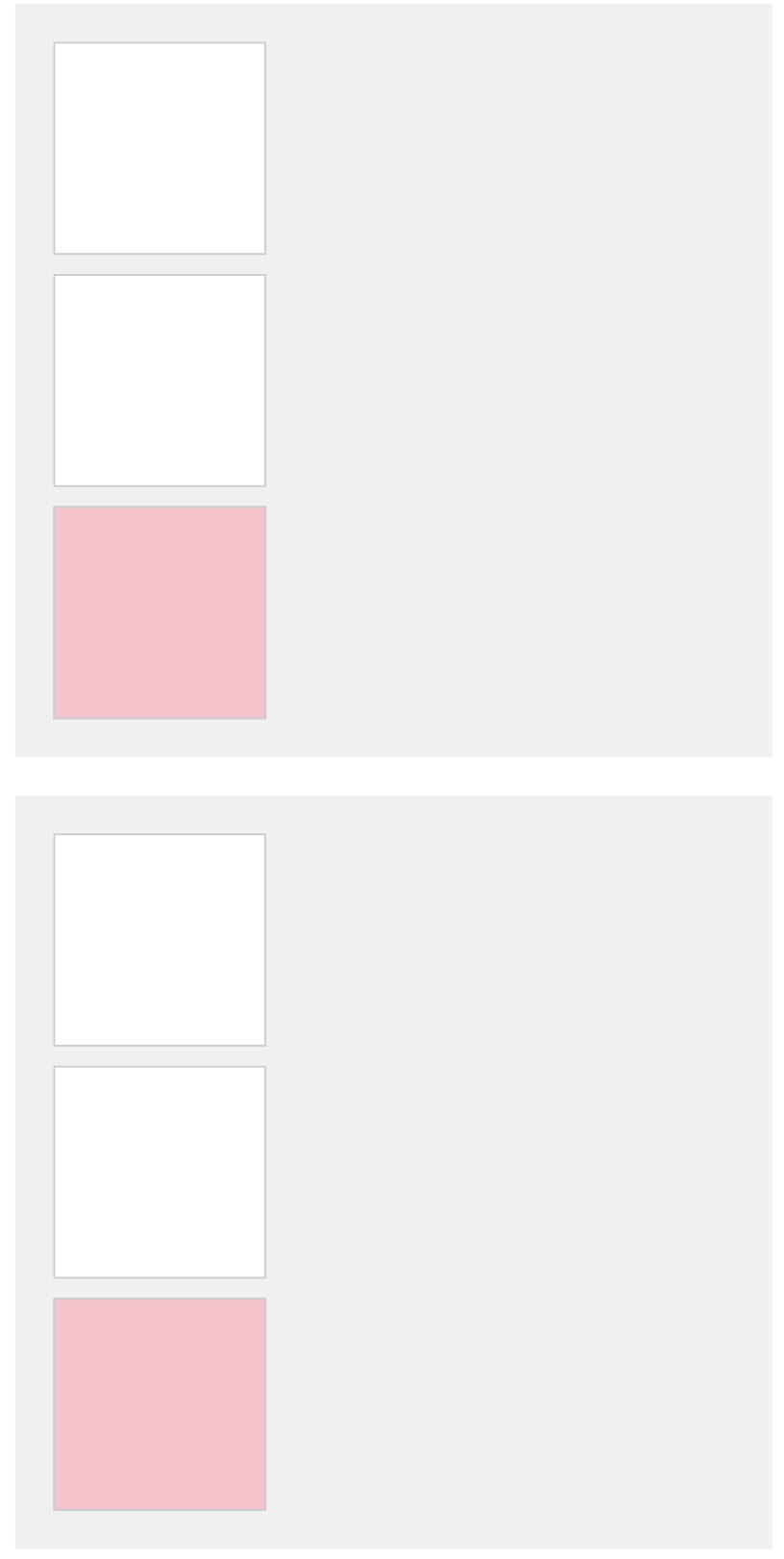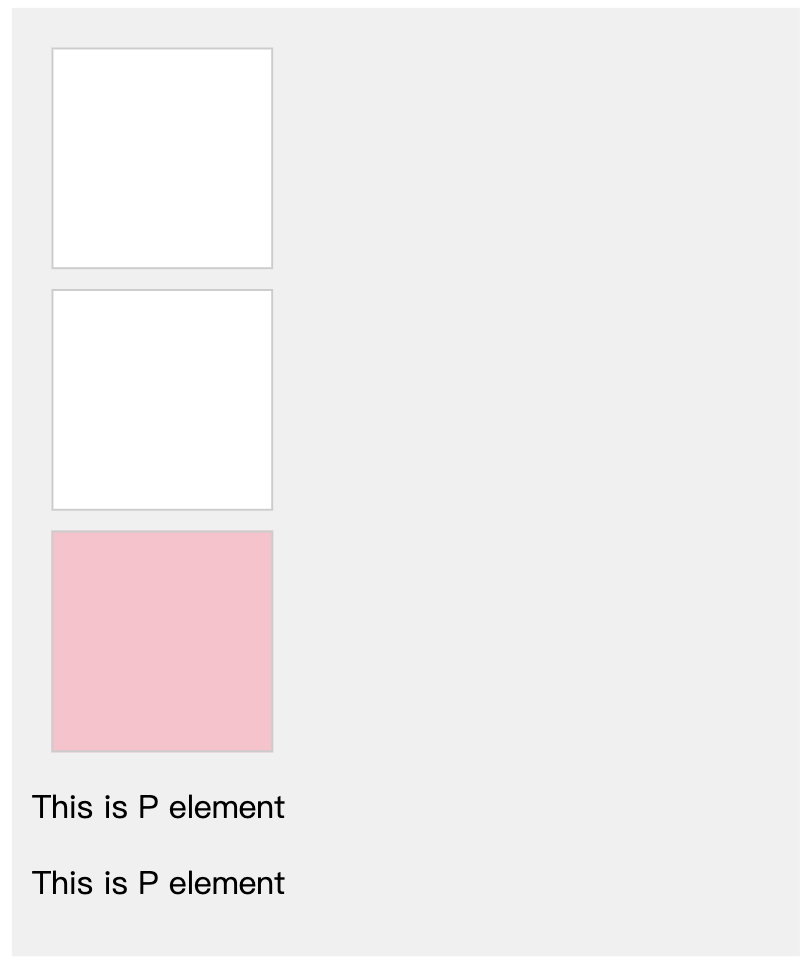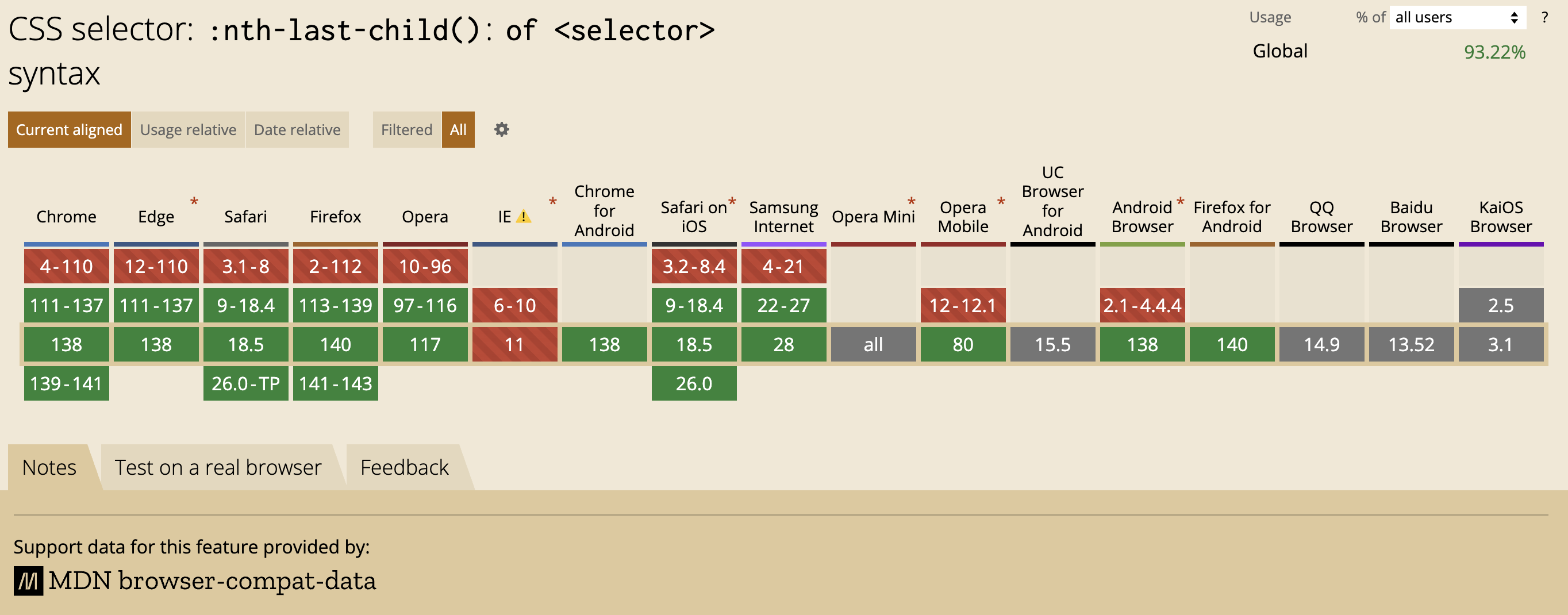1. 情况一:选择列表中最后一个子元素
假设现在有这么一个列表结构:
1 | <style> |

如果我们希望最后一个 list-item 添加一个 background-color,会很快想到 last-child 选择器,并写出如下的 css:
1 | .list-item:last-child { |
这个选择器的意思表示在文档中最后一个子元素如果是 .list-item 的话,background-color 就设置为 pink。对上面的文档结构是生效的,但是不够严谨,假如页面中还有一个其他的 list 也嵌套了 .list-item 元素,比如:
1 | <div class="list"> |
那么 .list2 中的 .list-item 也会被设置为 background-color: pink,因为它是属于 .list2 元素的 last child。

因此为了避免出现这种情况,使用 last-child 伪类的时候我们应该尽可能的指定具体是那个元素下的 last child,对于我们当前的示例来说,就是 .list 的 last child,因此,选择器应该写为:
1 | .list .list-item:last-child { |
但是如果存在 .list-item 元素是 .list 元素的孙子元素,比如:
1 | <div class="list"> |
.list-item 中嵌套的 .list-item 也被选择器 .list .list-item:last-child 命中:

因此我们一定要再次缩紧选择器的选中范围,这时候就要使用 > 子组合器,明确自定只有 .list 元素下的直接子元素 .list-item 是其最后一个子元素时才命中:
1 | .list .list-item:last-child { |

此外,如果我们对于最后一个元素的 class name 没有要求的话,也可以不用指定 classname,直接写为:
1 | .list > :last-child { /** 等同与 .list > *:last-child */ |
就表示选中类表中任意最后一个直接子元素。
2. 情况二:选择列表中某种标签的最后一个子元素
如果想要选择列表中最后某类标签的最后一个子元素,可以使用 last-of-type 选择器:
1 | <div class="list"> |
1 | .list > div:last-of-type { |
表示选中 .list 元素中的直接子元素里的最后一个 div 元素:

这时候不得不提一句 last-of-type 与 classname 相结合的情况:
1 | .list > .list-item:last-of-type { |
当 .list-item 类选择器与 :last-of-type 结合的时候,首先查看 .list-item 是什么元素,并且查看拥有 .list-item 类名的元素是否是该类元素的最后一个,举例来说:
1 | <div class="list"> |
3. 情况三:选择列表中某个 class name 的最后一个子元素
如果想要选中列表中最后一个 class name 为 .list-item 的元素,比如:
1 | <div class="list"> |
与上面不同的是列表中 .list-item 绑定的 div 元素并不是 .list 中的最后一个 div,因此不能使用 :last-of-type。
这时候我们可以使用 :nth-last-child 结合 of <selector> 语法来选中 .list 中的最后一个 .list-item 元素:
1 | .list > :nth-last-child(1 of .list-item) { |
上面的选择器的意思为:在 .list 的直接直接点中,从后往前数,命中 .list-item 选择器的第一个元素,也就是选取列表中的最后一个 .list-item 元素。
但是需要注意的是,虽然浏览器很早就支持了 nth-child、nth-last-child,但是对于 of <selector> 语法是 CSS4 才支持的,Chrome 需大于 111(2023年发布),Safari 需 大于 9(2015年发布),IE 则完全不支持,兼容列表如下:
